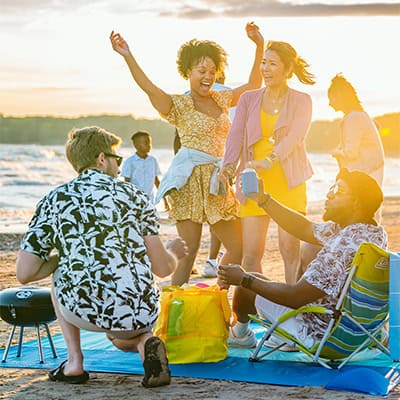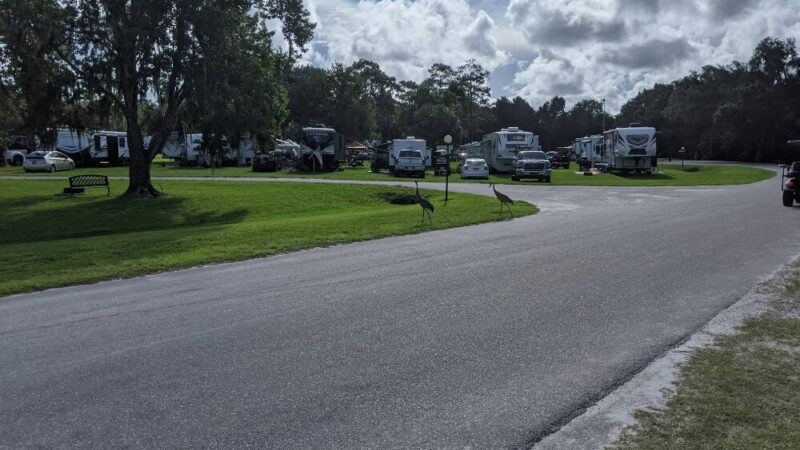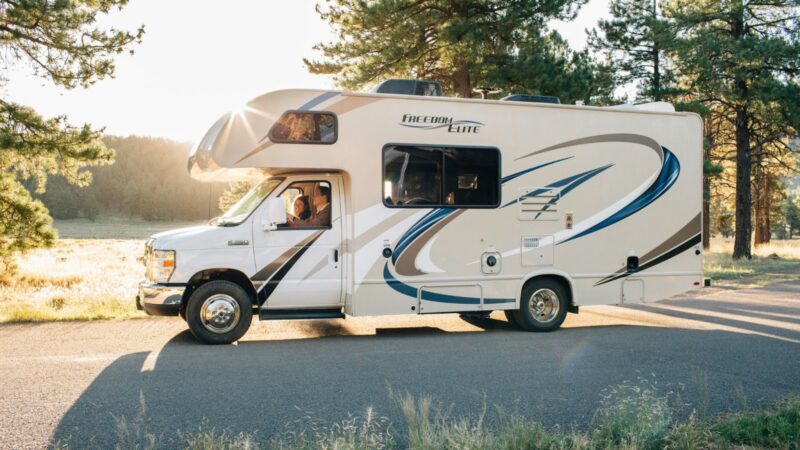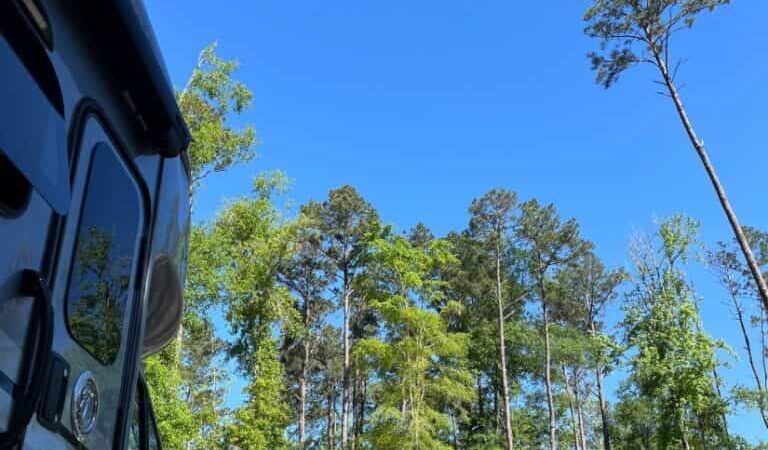How To Keep Your Dog From Damaging Your RV
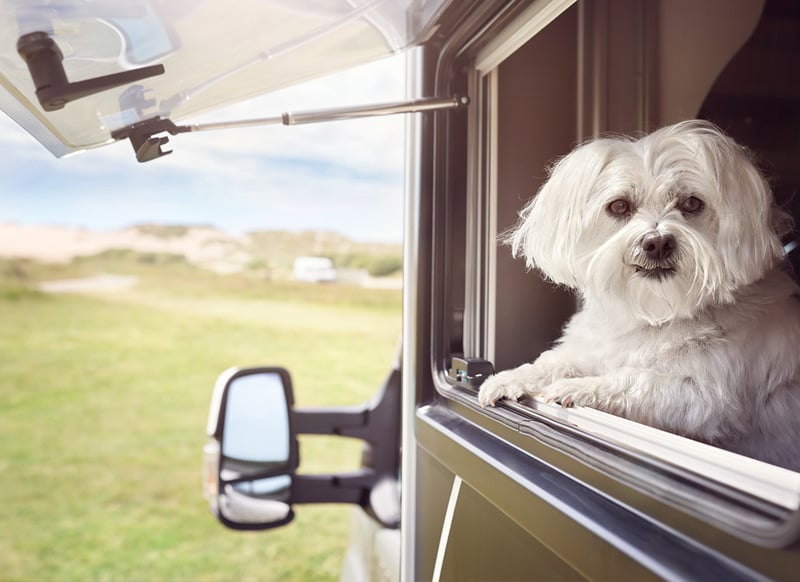
What Can You Do To Minimize Pet Damage In Your RV?
If you are a pet parent, you probably love bringing your dog along for all your RV travels. Hopefully, Fido or Fifi is well-behaved and won’t cause any issues when you must be away from your motorhome or trailer.
Unfortunately, there are times when a dog can get anxious, stressed, or fearful, and they could end up damaging your RV. No one wants to come home to ruined walls, doors, or blinds. When you see the carnage, feeling sorry for the dog is probably not the first emotion you will have.
Let’s take a closer look at how to keep your dog from damaging your RV from the start.
Assess your dog
If your dog is anxious and fearful at home when you leave, that state of mind will probably not be better in an RV. In fact, with the amount of activity that goes on in a campground, it might just get worse.
Think about kids running around, other dogs walking by your side, or strange noises that your dog might not be familiar with. These noises and other campground activities could cause your dog to have some negative behavior that you don’t see at home.
As you make your assessment, ask yourself a few questions. Is there anything that I would like to or plan to do on my RV trip that won’t allow my dog to come with me? Remember, if you enjoy hiking, many national parks don’t allow dogs on any of the trails.
Can I leave my dog in my RV safely? Are you sure the neighbors won’t be annoyed by excessive barking? Once you’ve asked yourself these simple questions, it’s up to you to decide whether to bring your dog along or not.
There are some very specific things you can do to help your dog adjust to RV life and to keep your RV safe and damage-free. Let’s look at a few ideas.
Crate train your dog
There are many reasons to crate-train your dog. Dogs feel a sense of safety when they have a den they can go to. If there were an emergency and your dog had to be crated, this would cause less stress in an already stressful situation.
Crate training is simply getting your dog acclimated to staying in a confined space that they will eventually make their own. While some may think that crate training is cruel, it is not when trained and used properly.
Utilize baby gates
Admittedly, some dogs just won’t take to a crate, or you need an alternative in your RV for space reasons. You can also utilize baby gates to confine your dog to one area. I knew someone who created a crate-like area from the lower bunk in their RV. It was out of the way and large enough for a puppy or a smaller dog. Gates are also lightweight and easy to store.
What is separation anxiety?
If your dog has separation anxiety, a crate or gate might not be such a simple solution to keep your RV from being damaged. In fact, adding an RV into your dog’s sensory mix might cause the problem to escalate.
Some signs that your dog has separation anxiety include:
- Drooling
- Panting
- Whimpering
- Cowering
- Excessive chewing
- Shivering and shaking
- Fearful
- Tucked in tail
- Barking
- Restless pacing
- Potty accidents
Acclimate your dog to the RV
Make sure you work on acclimating your dog to the RV. Take some time to hang out there before you head out on a trip. Practice leaving your dog for short periods of time. Stay outside and see if they bark while you’re gone.
Once you get to your campground, help your dog acclimate to their surroundings by making sure you do activities that will help burn off energy before you leave them alone. Plan a hike or an afternoon swim before you head to a nearby restaurant for a few hours.
Also, make sure your dog has their own comfortable spot. Instead of allowing them to roam the entire RV, confine your dog to a bedroom or living area. Make sure they have a comfy bed and some snacks. If you confine them to a crate, make sure there is non-spillable water and a few chew toys, and you can even cover the crate with a blanket or towel that has your scent. The covering will make it seem more den-like.
Set your dog up for success
Some other things you can do when leaving with your dog include:
- Close the window shades: This will help to minimize outside distractions.
- Leave a light on: If you plan to get home after dark, a light will help you and help your dog to feel more comfortable.
- Turn on some white noise: White noise could include a television with the sound on low. We utilized Dog TV for one of our anxious dogs. Running the air conditioner or a fan could also help to distract from outside noises.
- Consider some anxiety medicine or other holistic options: Check with your veterinarian for options that you can use only when you need them. CBD oils are said to work wonders to calm your dog, and there are plenty of calming treats on the market as well.
- Try a Thunder Shirt: These work like swaddling for a baby or a weighted blanket. They help minimize stress and anxiety and are a safe and drug-free option.
- Leave treats: Hide dog treats for your dog to find while you are gone. Also, you can purchase a Kong toy that you can fill with peanut butter and treats. Freeze it so it will take your pup some time to extract all the goodies.
Pet monitors
Having a way to monitor your dog while you are gone is extremely important. If the electricity in your park were to go out, or in your site, or your AC quit working, the temperature in the RV on a hot day could kill your pups.
Some monitors work with WiFi and some utilize a cell signal. You can also utilize a camera that you can access on your phone. You can put it near a temperature gauge to see what the temperature is in the RV.
Waggle is one of the best options for RVers, and sends you realtime alerts via text message. There are also dog monitors that you can purchase that will allow you to see your dog while you are gone and pop them out a treat as well.
Training is key
While you can’t always control what your dog does while you aren’t home, a well-trained dog is key to keeping your dog and your RV free of damage. Crate train your dog as a puppy so they will always find solace in their own space.
For your dog’s safety, practice calling your dog back to you. This could be important if your dog was to get loose. A good recall is one of the most important behaviors you can teach.
Also, make sure your dog is not allowed to run out the door, whether at home or in the RV. Practice teaching your pet to wait until you give the signal to go through the door or gate. This type of training could save your dog’s life and help prevent RV damage.
How will your dog behave on your next RV outing?
Take the time to introduce your dog to being left alone in your RV. Campgrounds are unfamiliar, and busy settings and could make your dog nervous. Until you are sure of your dog’s behavior, don’t leave them alone for long periods of time. Start with short absences. Go for a short 10-minute (or less) walk to see how they react. Slowly work your way up to 20 or 30 minutes.
While you work with your dog, make sure you have these helpful things in place:
- Create a safe haven for your dog with a fluffy blanket and maybe a shirt with your smell.
- Turn on the radio, television, or a fan to create white noise.
- Close the shades to eliminate distractions.
- Keep a light on for comfort.
- Provide a chew toy and treats.
- Take time to introduce your dog to your RV and help them get used to being alone in your camper.
Get tips from other RVers
One of the best parts about RVing is engaging with the community of traveling enthusiasts. iRV2 forums allow folks to chat with other RVers online, and get other perspectives on everything RVing, including products, destinations, RV mods, and more.
The post How To Keep Your Dog From Damaging Your RV appeared first on RV LIFE.


